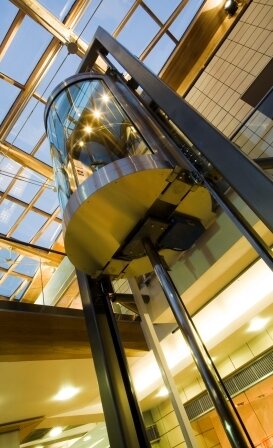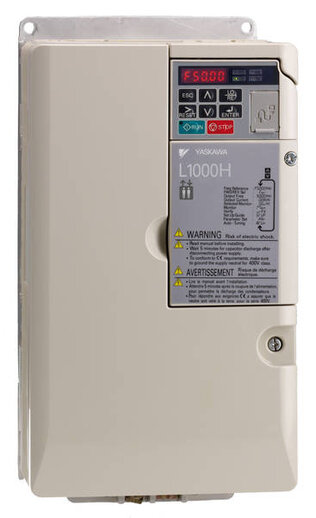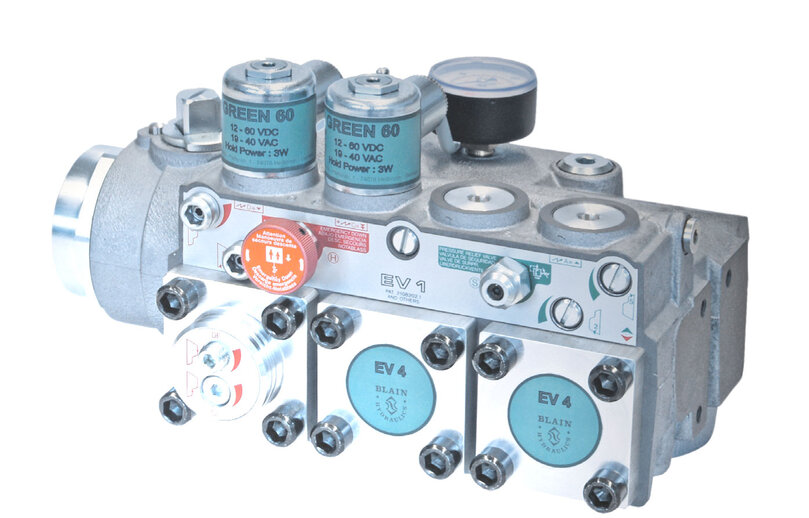Our industry-leading, high-speed industrial robots include high-payload, extended-reach, ultra-maneuverable seven-axis and unique 15-axis dual-arm robots.
Blain hydraulic lift drives
- Endüstriler
- Asansör Uygulamaları Çözümlerimiz
- müşteri
- Blain Hydraulics GmbH
Challenge
Energy efficiency for (almost) everyone
Hydraulic lift drives: requirements and current solutions
Energy efficiency is playing an increasingly important part in the design of hydraulic lifts. As a result, inverter drives have been used in these lifts for quite some time. Up to this point, however, there has been a distinct lack of simple, cost-effective and reliable solutions. A new joint development from Blain Hydraulics and Yaskawa is now set to change things for the better.
Hydraulically powered lifts are known to be a more effective solution for heavier loads than cable-borne elevators and cost 15 to 25% less. They also enable highly reliable and low-maintenance solutions, but they can only travel limited distances (up to around 18 m). However, when you consider that 95% of the world’s buildings have fewer than six stories, and only 1% are high-rises, the market potential of lifts for lower buildings quickly becomes clear: 40% of the current total of 10 million lifts are of the hydraulic variety and 80,000 to 100,000 new lifts are installed every year.
Particularly in the face of increasing energy prices, energy efficiency is becoming an ever more important factor in the selection of components for new installations. In addition, the high number of hydraulic lifts already in operation offers an enormous modernization potential, with energy efficiency also playing a central role in this case. Consequently, there is a great need for new and efficient drive concepts, with a particular emphasis on those for upgrading existing hydraulic lifts.
Solution
Inverter drives and valves in hydraulic lifts
In standard hydraulic drives, the pump is always running at full speed. The flow of oil and thus the motion of the cage is managed solely via the control valve. The valve and the required valve electronics can be relatively complex. The bypass control in the valve causes the oil to heat significantly, which reduces its useful life, may necessitate oil coolers and has a negative impact on ride quality. The effect of the oil temperature on the ride quality means that valve adjustments are often required at different times of the year. The energy efficiency of these systems barely meets today’s standards.
An important and logical step on the way to energy-efficient drive concepts for hydraulic lifts is, therefore, the use of modern inverter drives. The key advantages of these systems are the decreased motor capacity requirements, reduced energy consumption and the precise, smooth ride, even with heavy loads.
Up until now, however, these benefits were countered by several disadvantages: For example, the initial investments for these systems are quite high, as are the planning and maintenance requirements. In addition, hydraulic lifts with inverters use more energy during idle than their conventional counterparts. As a result, inverter drives are now used only for hydraulic lifts designed for particularly heavy loads. According to current estimates, the figure is around 20%*. New technical developments are expanding the potential area of application for energy-efficient solutions with inverter drives. However, two opposing methods have turned out to be dead-ends, the first of which was to reduce the complexity at the cost of performance. The second approach was to improve the ride quality and efficiency by using increasingly complicated additional components such as sensors or encoders, which make the system complex, more prone to failure and difficult for non-experts to operate.
Control unit and AC drive as a compact set
The VVVF (Variable Voltage Variable Frequency) solution developed by Blain Hydraulics and Yaskawa demonstrates the actual potential for optimization, which can be found in the inverter drive technology itself and in the valve of the control unit. With this solution, the effective area of application for inverter drives covers approximately 70% of the world’s hydraulic lifts in residential buildings with motor capacities up to 15 kW internationally and around 80% of those in Europe. The energy-efficient package solution comprises the new EV4 hydraulic control valve from Blain and the new L1000H inverter drive from Yaskawa. Both the valves and the inverter drive are available in various sizes and designs.
The motor is controlled without an encoder (open-loop). A speed sensor, which is normally mounted directly on the motor in the tank and thus constitutes a major cost factor, is not required. This not only simplifies the system, but also makes the solution particularly attractive when renovating existing power units.
Further advantages of the new concept: The system merely requires a sensor to record the oil temperature. Based on the measured value, all negative effects on the ride quality resulting from a varying oil temperature can be compensated. The overheat sensor is easy to install and relatively durable, which greatly increases the reliability of the system. Unlike those used in previous systems with inverter drives, this sensor does not require any additional pressure sensors or flow meters. The valve is actuated directly via the lift control system, which eliminates the need for elaborate valve controls that are not only prone to failure but also require a great deal of time to set. As a result, even existing control valves can be replaced relatively easily with a new EV4. Existing mechanical valves from Blain can be retrofitted as fully valid EV4s and combined with an L1000H. The power unit and control system can continue to be used.
Result
High-performance hardware
The cornerstone of this solution is the L1000H inverter drive, which was developed especially for hydraulic lift applications: It ensures exact speed, a very comfortable ride and precise alignment when the lift arrives at the stop, regardless of the load and the oil temperature. Varying travel durations and travel properties or stop accuracy are practically unnoticeable, regardless of whether the lift is carrying a maximum load or a lighter load.
Thanks to the inverter drive, the inrush current is markedly reduced compared to direct grid operation. This makes the solution ideal for normal residential building connections, which often prohibit high inrush currents.
The pump speed is continuously regulated such that only the required flow of oil is provided. There is no oil bypass. The hydraulic oil does not heat up, meaning that it can be used more often and without the need for oil coolers.
One disadvantage of using inverters in hydraulic systems is that they continue to consume energy even when the system is in standby. There is a solution for this problem as well: the inverters can be simply switched off after a certain period of downtime and switched back on when needed. After they are switched on, the system is ready for travel in less than two seconds, meaning that waiting times are minimal. Combining the EV4 control valve with the L1000H inverter drive can reduce energy consumption by up to 50%. This means lower operating costs, as well as a significant contribution to environmentally friendly buildings.
Conclusion
A new energy-efficient VVVF solution for hydraulic lifts combines Blain’s EV4 control valve and Yaskawa's newly developed L1000H. The package is easy to install and set up, thus making it ideal for upgrading existing systems. With minimal conversion work, lifts with low to medium usage levels can now also benefit from the advantages of inverter drives. In concrete terms, this means energy savings of up to 50%. Furthermore, the solution is extremely reliable and thus offers a fast return on investment.






















